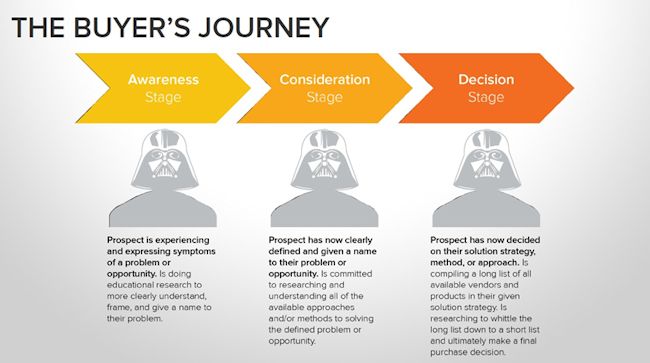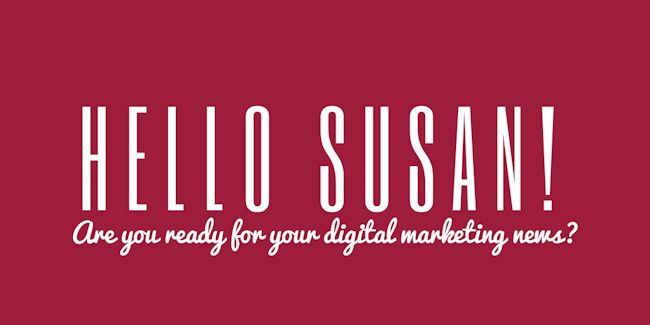
As a hospitality brand, you may have noticed that in today’s digital world, it’s harder than ever to catch a prospect’s attention. With information so easily available to anyone searching for it, you may be wondering how you can make your content stand apart. How can you give your prospects what they want and when? Well, we’ve got the answer. Content personalization.
The Future Of B2B Content Marketing … Personalization!
Personalized content is a relatively new method of digital marketing that has proven super effective, for not only grabbing your prospect’s attention but also building a stronger bond. If you’ve ever used Amazon or Netflix, you’ve experienced automated, personalized content. These sites offer you content based on what you’ve purchased or watched before. They use data about you to provide further content based on your taste and past behavior.
What Amazon and Netflix do is just one simple example of personalized content. There is a whole range of options available now for organizations that want to personalize their content.
Personalized content refers to using information you have on your target audience to create content tailored to their interests, preferences, or needs.
Why Personalization is Essential
In today’s world of information overload, personalization is essential for a number of reasons. First, customer attention is increasingly harder to attract. Today’s customer is constantly bombarded with content, so content creators need to make theirs stand out. Personalization does this by speaking directly to the user’s preferences, problems, and needs.
Personalizing your content allows you to create a stronger bond with your audience. They feel that you know them and you’re speaking directly to them. While everyone follows any number of content outlets online, your audience will read your content first if they feel they have a strong relationship with you.
Content personalization is driven by the data you have about your target market and their needs and behaviors. The more data you have about your audience, the more you can personalize your content to meet their needs. The foundation of your personalization is a clearly identified customer persona.
Getting Started with Personalization
The first step in personalizing your content is to develop a clear message and goal for each piece of content you produce. If you don’t have a strategic reason for the content in the first place, personalization won’t help you reach your objective. It’s a matter of deciding where each piece fits into your overall strategy.
There are five degrees of personalization that you can consider, and some are easier than others. The five areas are:
Segment Specific. Personalize your content by target market segments. Segments might include industry, particular interests, demographic differences, geographical location, or psychographic factors such as a specific need or problem.
Persona Specific. Personalize content by buyer types. Examples of buyer types include first-time visitors to your website, regular blog readers, prospects who expressed interest in a certain product or service, leads from a specific tradeshow, and so on.
Stage-Specific. Persona specific content is personalized for a type of buyer. The difference with stage-specific is that it identifies a certain step in the buying process. You might create content personalized for a first-time cold prospect, or aim content at a repeat buyer who you know is likely to make a purchase based on an upsell or cross-sell.
Account Specific. You might personalize your content for a particular prospect or organization.
Lead Specific. This type of personalization is for one specific individual.
Automated Tools for Personalizing Content
Tools are often essential for personalizing content. You don’t have to do it all manually. There is a wide range of tools available and they include:
Quiz plugins – When a person visits your website, they’re presented with a short quiz asking about their interests. Based on their answers, it directs them to the content that would be most relevant to their stated interests.
Profiles plugins – Some sites now have a profile option for visitors. They ask the visitor to choose which profile most matches them. These profiles could be something like positions in a company, such as New Hire, Sales Staff, or Management. They choose the profile and then are taken to the most appropriate page.
Email autoresponders – An autoresponder is a program used for email marketing. It allows you to send messages to your subscribers and receive data about them. Autoresponders offer a wide range of personalization options. They can offer specific content based on the actions or preferences of subscribers.
Recommendation plugins – Another example is a WordPress plugin that presents specific posts or products based on where someone lands on your site or which content they consume.
Site visit plugins – Another example would be a plugin that uses the visitor’s name for a personalized message. When they land on the page, it says something like, “Hi, (name), welcome back! Here are the latest posts we think you’d like.”
Refining Content Personalization
Once you implement your content personalization strategy, you need to monitor it in order to understand what’s working and what’s not. You can then make any changes necessary and create a stronger personalization plan.
The Way of the Future for B2B Content Marketing
We predict that content personalization will be even more essential in the future. And, no matter if you’re marketing to the B2C segment or the B2B segment, personalization techniques will become increasingly important as people seek more personal experiences online. The more you can make a connection, the better your bottom line!
What You Can Do Today: Content personalization doesn’t have to be creepy. In fact, you probably have already gathered tons of data on your current and potential customers. Get started by segmenting your data into an Excel Workbook. Begin with the obvious differentiators, and add to the information as necessary. Next, determine how you can upgrade your email program to speak specifically to each of those segments. As you build and test your program you’ll be able to refine for even better results!





